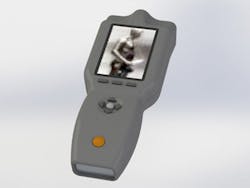Scientists working to develop first superspectral image sensor
Researchers and engineers from the University of Glasgow, backed by a grant of 1.5 million pounds, are starting a four-year project to develop the ‘superspectral’ sensor, which would be capable of resolving images across different wavelengths of the electromagnetic spectrum.
Specifically, a superspectral chip would be able to resolve images from the mid-infrared (MIR), far-infrared (FIR) and visible areas of the electromagnetic spectrum. There are currently sensors on the market that provide information on each of these areas of the spectrum, but this single chip would provide an “all-in-one” package.
Professor David Cumming, who is leading the project, said in a University of Glasgow press release that researchers at Cumming’s university will be leading the new national Innovation Centre for Sensor and Imaging Systems, and working to make the world’s first superspectral sensor.
Sensor fusion already allows data from traditional visible and MIR sensors to be combined to provide more effective visualization, but the superspectral sensor will provide considerably improved imaging with a wide range of practical applications, according to the press release. This includes medical imaging and security, according to Cumming, who says that the FIR aspect of the sensor could be used to examine blood flow around a skin blemish to determine whether it’s a harmless mole or a potentially dangerous cancer, and the MIR could provide visual feedback on a patient’s temperature.
The sensor could also provide valuable feedback for workers in high-security spaces such as airports, where FIR could identify any items under clothes which require further investigation and the visible light capabilities could contribute to facial recognition systems, he added.
View the University of Glasgow press release.
Also check out:
Infrared scanners help speed boarding
3D imaging machine helps physicians identify cancer earlier, more frequently
Share your vision-related news by contacting James Carroll, Senior Web Editor, Vision Systems Design
To receive news like this in your inbox, click here.
About the Author

James Carroll
Former VSD Editor James Carroll joined the team 2013. Carroll covered machine vision and imaging from numerous angles, including application stories, industry news, market updates, and new products. In addition to writing and editing articles, Carroll managed the Innovators Awards program and webcasts.
